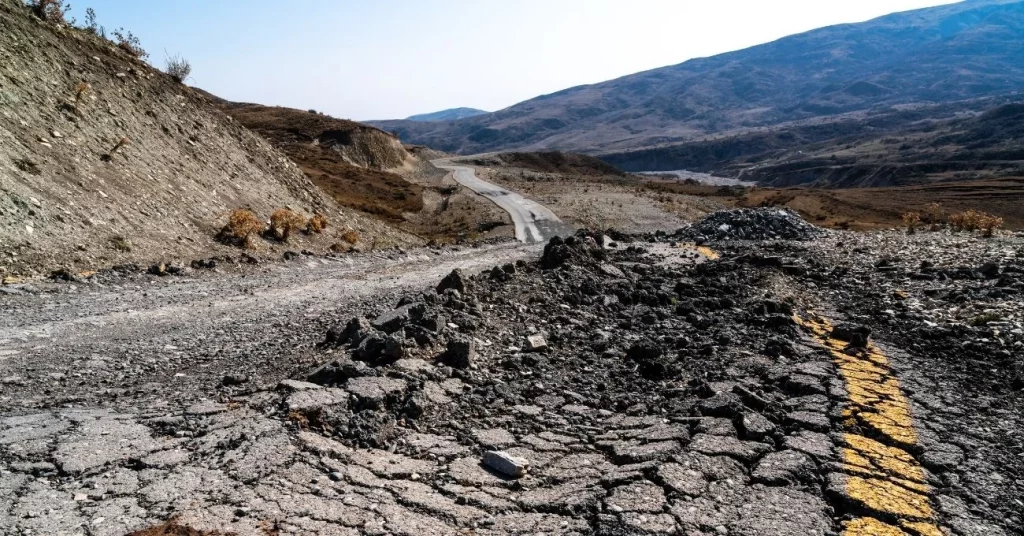Weather-related disruptions can significantly impact the efficiency and reliability of supply chains. The logistics industry faces several challenges.
Transportation Delays
Adverse weather conditions, such as storms, heavy snowfall, or extreme heat, can lead to transportation delays. This affects trucking, rail, and air cargo operations, causing missed delivery deadlines and reduced supply chain predictability.
Infrastructure Damage
Severe weather events, including hurricanes, floods, and landslides, can damage transportation infrastructure, such as roads, bridges, and ports. These disruptions impede the smooth flow of goods and materials, leading to delays, rerouting, and increased costs.
Seasonal Variations
Weather patterns throughout the year, such as monsoons, snowstorms, or hurricane seasons, impact logistics planning. For instance, businesses may need to adjust inventory levels, transportation modes, and routes to account for weather-related challenges during specific seasons.

Infrastructure Resilience in the Face of Climate Change
Climate change poses a threat to transportation infrastructure, necessitating a focus on resilience and adaptation. Key considerations include:
Coastal Risks
Rising sea levels and increased storm surges expose coastal infrastructure, including ports and terminals, to heightened risks. The logistics industry must invest in protective measures, such as seawalls, elevated structures, and improved drainage systems, to safeguard against flood-related damages.
Extreme Temperatures
High temperatures can cause pavement deterioration, affecting road quality and impacting trucking efficiency. Additionally, extreme cold can lead to frozen pipes, disrupted fuel supply, and challenges in maintaining equipment, necessitating robust maintenance and contingency plans.
Changing Precipitation Patterns
Alterations in rainfall patterns can result in flooding or drought conditions, both of which can impede logistics operations. Infrastructure designs must consider the potential impacts of increased rainfall on drainage systems and the availability of water for maritime and inland waterway transportation.

Risk Management and Weather-Related Events
The logistics and transportation industries must effectively manage risks associated with weather events and climate change:
Insurance Coverage
Companies in the logistics sector should carefully assess their insurance coverage to ensure adequate protection against weather-related risks. Policies covering cargo damage, business interruption, and infrastructure repairs should consider the potential impacts of extreme weather events.
Contingency Planning
Businesses need robust contingency plans to address weather-related disruptions. This includes alternative transportation routes, backup storage facilities, real-time weather monitoring systems, and collaboration with service providers capable of adapting to changing conditions.
Data-Driven Decision Making
Leveraging weather data, historical records, and predictive analytics enables logistics companies to make informed decisions regarding route optimization, inventory management, and contingency planning. Access to accurate and timely weather information empowers logistics professionals to address potential disruptions proactively.
Weather patterns and climate change pose significant challenges to the logistics and transportation industries. By recognizing the impact of weather-related disruptions, investing in resilient infrastructure, implementing effective risk management strategies, and embracing adaptive approaches, logistics companies can enhance their resilience, minimize disruptions, and maintain efficient supply chains. As the climate evolves, the logistics industry must proactively adapt to ensure the seamless movement of goods and materials in a changing world.
How Can Buluttan Help?
As Buluttan, we are transforming the logistics and transportation industry, making supply chains more resilient. We have developed different products and services to minimize the negative impact caused by climate change and meteorological events and increase operational efficiency to reduce weather-related costs and maintain profitability. Our solutions include:
Hyper-Local Weather API: Easily integrate our plug-and-play API and obtain
- Up to 15 days of weather forecasts
- 40+ years of past weather data
- Extreme weather alerts through EWAS engine
- T-1 meteorological observations for your location and use the hyper-local weather intelligence in your models
Buluttan Map Layer
- Integrate weather into the navigation tools and maintain a smooth trip.
- Reduce delays and risks while efficiently managing your fleet and resources.
- Plan for the future and be able to respond to changes proactively.
Buluttan SkyWatch
- Monitor extreme weather events and plan business operations accordingly.
- See extreme weather event type, when it will happen, and how severe it will be.
- Get benefits from radar imagery and obtain notifications through our nowcasting alarm system.







